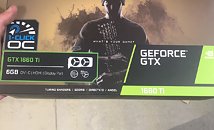
Micron Updates Roadmap, Promises 32 Gbit DDR5 and GDDR7 for 2024
During yesterday's HBM3 Gen2 memory products yesterday, Micron also shared an updated roadmap with select media and partners. The most interesting details on that roadmap were updates to DRAM and GDDR memory products, with increases in capacity coming for both types of memory. Micron is aiming to launch 32 Gbit or 4 GB DDR5 memory ICs somewhere in the beginning of 2024, which means we can look forward to 32 GB single sided DIMMs with a single DRAM die per memory IC. This should, in theory at least, enable cheaper 32 GB DIMMs, but as always, it's unlikely that the cost saving will be passed on to the end customer. As far as server customers goes, Micron is planning 128 GB DIMMs for 2024, followed by 192 GB DIMMs in 2025 and 256 GB DIMMs in 2026.
When it comes to GDDR, Micron will be launching JEDEC standard GDDR7 memory with 16 and 24 Gbit dies, or 2 and 3 GB capacity, the latter could be the highest capacity GDDR7 memory IC on the market and could see some interesting graphics card configurations. Micron is promising speeds of up to 32 Gbps per pin or 128 GB/s per chip, which is a big jump up from its current best GDDR6X memory which tops out at 24 Gbps per pin or 96 GB/s per chip. GDDR7 differs from Micron's proprietary GDDR6X by using PAM-3 rather than PAM-4 signalling, although this is simply something that the likes of AMD and NVIDIA would have to design their GPUs around. Micron doesn't appear to have any plans for GDDR7X at this point in time. The company is also working on several new iterations of HBM memory over the coming years, with the company expecting to hit 2 TB/s sometime in 2026 or later.
When it comes to GDDR, Micron will be launching JEDEC standard GDDR7 memory with 16 and 24 Gbit dies, or 2 and 3 GB capacity, the latter could be the highest capacity GDDR7 memory IC on the market and could see some interesting graphics card configurations. Micron is promising speeds of up to 32 Gbps per pin or 128 GB/s per chip, which is a big jump up from its current best GDDR6X memory which tops out at 24 Gbps per pin or 96 GB/s per chip. GDDR7 differs from Micron's proprietary GDDR6X by using PAM-3 rather than PAM-4 signalling, although this is simply something that the likes of AMD and NVIDIA would have to design their GPUs around. Micron doesn't appear to have any plans for GDDR7X at this point in time. The company is also working on several new iterations of HBM memory over the coming years, with the company expecting to hit 2 TB/s sometime in 2026 or later.
















